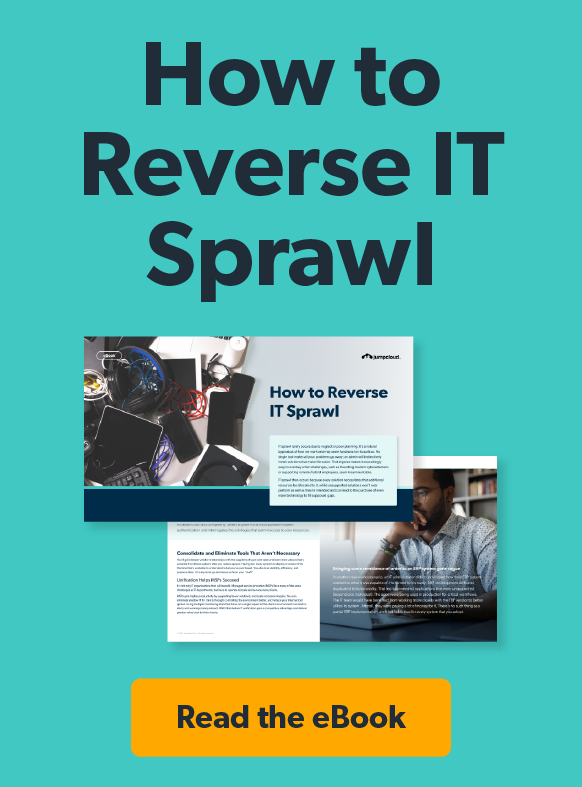Updated on December 22, 2025
Linux has come a long way since its humble beginnings. Today, it powers everything from supercomputers to smartphones, making it a critical part of the tech ecosystem. For individuals and businesses alike, choosing the right Linux distribution (or “distro”) can make all the difference. Whether you’re a developer, IT professional, or a curious beginner, understanding the popularity and strengths of different Linux distros is key to finding the one that suits your needs.
This guide explores the factors influencing distro popularity, the challenges in measuring their reach, and a detailed look at the five most popular Linux distributions in 2025, specifically through the lens of enterprise relevance.
Understanding Linux Distribution Popularity
Linux distros come in all shapes and sizes, from user-friendly starter options to highly customizable builds for experts. But what makes a distro popular, especially for IT professionals? Our selection for the top 5 is based on a qualitative assessment of community size, industry adoption (desktop and server), developer popularity, and ongoing development trends observed in early 2025.
Factors Influencing Distro Popularity
- User-Friendliness and Ease of Installation: A smooth installation process and intuitive interface make some distros stand out, particularly for beginners.
- Community Support and Documentation: Active forums, robust documentation, and a thriving user base make solving problems and learning easier.
- Software Availability and Package Management: A large repository of software and efficient package management keep distros practical for everyday use.
- Stability and Reliability: For mission-critical systems, stability is paramount. Long-term support (LTS) releases tend to attract users who prize reliability over the latest features.
- Performance and Resource Requirements: Lightweight distros excel on older hardware, while resource-heavy ones often offer cutting-edge features.
- Target Audience: Distros appeal to specific audiences, from beginners to developers to server managers.
- Commercial Backing vs. Community-Driven: Commercial support tends to add polish and reliability, while community-driven distros often focus on innovation and freedom.
Challenges in Quantifying Popularity
Unlike paid software, Linux doesn’t have clear-cut market share metrics. Here’s why it’s tricky to measure popularity in the Linux world.
- No Centralized Measurement: Linux usage spans diverse hardware and use cases, making data difficult to collect.
- Desktop vs. Server Usage: Distros that dominate the desktop space may differ from leaders in server environments. While DistroWatch.com offers a popular gauge for desktop interest, server market share figures are harder to pinpoint but often guide enterprise adoption.
- Community Influence: Certain distros gain cult-like followings in niche areas, such as gaming or development.
Top 5 Most Popular Linux Distros (2025)
| Feature / Distro | Ubuntu | Fedora | Linux Mint | Arch Linux (and Derivatives) | Debian |
| Primary Focus | Versatility (Desktop, Server, Cloud, IoT) | Innovation & Latest Technologies | User-Friendly Desktop (Windows/macOS transition) | Customization & Rolling Release (DIY approach) | Unmatched Stability & Free Software |
| Release Model | Fixed (LTS & non-LTS) | Fixed (Rapid Release Cycle) | Fixed (LTS-based) | Rolling Release | Fixed (Stable, Testing, Unstable) |
| Commercial Support | Yes (Canonical – Ubuntu Advantage) | Yes (Red Hat sponsors; upstream for RHEL) | Community-driven | Community-driven | Community-driven |
| Typical Desktop Use | General use, Development, Corporate Workstations | Early adopters, Developers | Casual users, Beginners, Home usage, Older hardware | Power users, System architects, Highly specialized dev | Stable, Clean, Minimalist setup |
| Typical Server Use | Web hosting, Cloud platforms, Container Orchestration | Testing/Experimental environments (upstream for RHEL) | Not typically used as a server OS | Niche embedded systems, Specialized dev servers | Mission-critical applications, Production environments |
| Key Strength(s) | Large community, LTS, Cloud/Container integration | Rapid innovation, Upstream for RHEL, Modern containers | User-friendliness, Out-of-the-box experience | Customization, Always up-to-date, AUR, Documentation | Ultra-stability, Massive repos, Foundational |
| Security Features | AppArmor (default), CIS Benchmarks | SELinux (default), Rapid updates | Stable Ubuntu base | Highly configurable (user-managed) | Strong focus on security updates/patches |
| Container/Cloud Integration | Excellent (Docker, LXD, KVM, official cloud images) | Excellent (Podman, Buildah) | Basic (inherits from Ubuntu base) | Advanced (user-managed, minimal base) | Strong (base for containers, cloud images available) |
| Primary Package Manager | apt | rpm (via DNF) | apt | pacman | apt |
| Admin Overhead | Moderate (well-documented, robust tools) | Moderate-High (fast releases, constant updates) | Low (desktop-focused) | Very High (DIY, granular control) | Moderate (stable, but less bleeding edge) |
Each Linux distro has carved its niche based on its unique strengths. Here’s a closer look at the top options.
1. Ubuntu
Overview: Ubuntu remains one of the most popular and versatile Linux distributions, renowned for its accessibility and wide application across desktop, server, and cloud environments. It is backed by Canonical, offering significant enterprise support.
Key Features & Strengths
- Large, Active Community and Extensive Documentation: A massive global community provides ample support and resources.
- Stable Long-Term Support (LTS) Releases: LTS versions are designed for reliability and extended maintenance windows, making them the primary choice for enterprise deployments.
- Excellent Server and Cloud Integration: Strong support for containers (e.g., Docker, LXD) and virtual machines (e.g., KVM), with official images optimized for major public clouds (AWS, Azure, GCP).
- Commercial Support: Canonical’s Ubuntu Advantage provides commercial support, extended security maintenance (ESM), and tools like Livepatch for kernel updates without reboots.
- User-Friendly Interface: Ideal for beginners on the desktop due to its simple interface and straightforward installation process.
- Strong Security Features: Integrates AppArmor for mandatory access control and offers tools for compliance with benchmarks like CIS.
Typical Use Cases
- Desktops: General use, development, and corporate workstations.
- Servers: Web hosting, cloud platforms, container orchestration (Kubernetes worker nodes), and enterprise-grade applications.
- IoT Devices: Relying on secure and lightweight systems (e.g., Ubuntu Core with Snaps).
2. Fedora
Overview: Fedora is a cutting-edge, community-driven distro sponsored by Red Hat. It focuses on innovation, offering the latest technologies and features. It serves as the upstream project for Red Hat Enterprise Linux (RHEL).
Key Features & Strengths
- Rapid Adoption of New Technologies: Known for incorporating the latest software versions and innovations quickly.
- Upstream for RHEL: Serves as the development and testing ground for features that will eventually be incorporated into RHEL, making it valuable for previewing future enterprise capabilities.
- Superb Development Environment: Provides a rich library of tools and modern software versions ideal for developers.
- Modern Container Technologies: Integrates tools like Podman and Buildah as first-class citizens, aligning with modern containerization strategies.
- Strong Security Defaults: Often ships with SELinux enabled by default, providing robust mandatory access control.
Typical Use Cases
- Desktops: Ideal for early adopters and developers who need access to the latest software and cutting-edge features.
- Servers: Used for testing and deploying new technologies in non-production or experimental environments. Generally, IT admins opt for RHEL or its derivatives for production servers due to longer support cycles.
3. Linux Mint
Overview: Linux Mint is widely regarded as one of the most user-friendly Linux distributions for desktop users, especially those transitioning from Windows or macOS.
Key Features & Strengths
- Clean, Familiar Interface: Offers intuitive desktop environments like Cinnamon, MATE, or XFCE, providing a comfortable experience for new Linux users.
- Strong Stability: Benefits from its foundation on Ubuntu’s Long-Term Support (LTS) releases, ensuring a reliable and well-maintained base.
- Excellent Out-of-the-Box Experience: Comes with pre-installed utilities, multimedia codecs, and essential applications, minimizing post-installation setup.
- Efficient Resource Management: Performs well on older or less powerful hardware, making it a good choice for extending the life of existing systems.
Typical Use Cases
- Desktops: Primarily suited for casual users, beginners, and general home usage due to its focus on user-friendliness and stable desktop experience.
- Older Hardware: An excellent option for repurposing older computers.
4. Arch Linux (and Derivatives)
Known for its “do-it-yourself” approach, Arch Linux offers maximum customization and a rolling-release model. Popular derivatives like Manjaro and EndeavourOS make Arch’s power more accessible while providing a more user-friendly installation.
Key Features & Strengths
- Lightweight and Highly Customizable: Adheres to the “Keep It Simple, Stupid” (KISS) principle, focusing on minimal design and configuration complexity for experienced users.
- Rolling-Release Model: Ensures software is always up-to-date by continuously delivering the latest versions without major version upgrades.
- Arch User Repository (AUR): Provides access to a vast, community-maintained library of additional packages.
- Extensive Documentation: The Arch Wiki is renowned for its comprehensive and high-quality documentation.
Typical Use Cases
- Desktops: Favored by power users and system architects who value ultimate control, customization, and up-to-date software.
- Development Environments: Ideal for highly specialized development setups and custom systems requiring specific, fine-tuned configurations.
- Niche Embedded Systems: Where a highly custom and minimal footprint is required.
5. Debian
Overview Debian is the backbone of many popular Linux distributions (including Ubuntu and Linux Mint), offering unmatched stability and a strong commitment to free software principles.
Key Features & Strengths
- Ultra-Stable and Reliable: Known for its rigorous testing process, making it an excellent choice for mission-critical systems and production environments.
- Massive Software Repositories: Boasts one of the largest software repositories, with over 50,000 packages available.
- Foundational Distro: Its stability and adherence to open-source principles make it a popular base for other distributions and custom server builds.
- Security Focus: A strong emphasis on security updates and patches throughout its lifecycle.
Typical Use Cases
- Servers: The go-to choice for mission-critical applications, web servers, database servers, and production environments where stability and long-term reliability are paramount.
- Desktops: Preferred by users seeking a highly stable, clean, and minimalist desktop setup.
- Developers: Often used as a base for creating custom Linux systems or appliances.
Key Considerations for Enterprise Linux Adoption
For IT professionals evaluating Linux distributions for enterprise environments, a deeper look beyond basic popularity is essential:
- Enterprise Support & Lifecycle:
- Evaluate the availability of commercial support (e.g., Canonical’s Ubuntu Advantage, Red Hat’s RHEL subscriptions, SUSE’s SUSE Linux Enterprise Server).
- Understand the release cycle (LTS vs. rolling) and the duration of security updates and extended support options. This dictates patching strategies and upgrade cycles.
- Compliance & Security Hardening:
- Assess out-of-the-box security posture: Are mandatory access control frameworks (SELinux, AppArmor) enabled and configured by default?
- Look for certifications: FIPS 140-2, Common Criteria, or specific industry compliance (e.g., HIPAA, PCI DSS).
- Availability of hardened benchmarks (CIS, STIGs) and tools to automate compliance checks.
- Management & Automation:
- Compatibility and integration with enterprise configuration management tools (Ansible, Puppet, Chef, SaltStack).
- Support for centralized logging (e.g., Syslog integration with Splunk, ELK stack) and monitoring systems (Prometheus, Grafana).
- Ease of managing large fleets, including remote device management capabilities.
- Cloud & Container Strategy:
- Availability of official, optimized images on major public clouds (AWS, Azure, GCP) and private cloud platforms.
- First-class support for containerization technologies (Docker, Podman, containerd) and orchestration platforms (Kubernetes, OpenShift).
- Talent & Ecosystem:
- Consider the availability of IT professionals experienced in managing the chosen distribution at scale.
- Evaluate the breadth of the third-party software and hardware vendor ecosystem that officially supports the distro.
Honorable Mentions
While the above distros dominate the scene, several others excel in niche markets or specific use cases, and are important for IT professionals to know:
- Pop!_OS: Built by System76, it’s often praised for its polished desktop experience, particularly for developers, gamers, and creators with advanced workflows.
- Kali Linux: Specialized in penetration testing and cybersecurity, providing a comprehensive suite of tools for ethical hackers and security professionals.
- Rocky Linux/AlmaLinux: These are strong, community-driven, RHEL-compatible operating systems that serve as popular, free replacements for CentOS in enterprise server environments. They offer stability and long-term support for those needing a RHEL-like experience without the commercial subscription.
- openSUSE: Offers both rolling (Tumbleweed) and fixed-release (Leap) options, known for its powerful YaST management tool and strong reliability.
Finding Your Perfect Linux Match
The beauty of Linux lies in its diversity. Whether you’re a beginner exploring a friendly distro like Linux Mint, a seasoned developer customizing Arch Linux, or an IT leader deploying mission-critical servers with Ubuntu or Debian, there’s a perfect Linux distribution for every need.
For IT professionals, the decision extends beyond mere popularity to encompass long-term support, security hardening, management tooling, and integration with broader enterprise infrastructure. Don’t be afraid to experiment. Many distros offer live versions, allowing you to test them without installation. Spend some time exploring, and you’ll find the Linux distro that best fits your unique requirements.
Manage Your Fleet With JumpCloud
When it comes to managing your diverse Linux fleet, JumpCloud offers a robust and unified solution, empowering you to secure, monitor, and manage all your Linux devices and endpoints with ease. As an OS-agnostic platform, JumpCloud extends this comprehensive device support to your Windows, macOS, and mobile devices, centralizing management across your entire IT ecosystem. This unique approach combines powerful device control with integrated identity and access management, giving you unparalleled oversight.
JumpCloud supports a wide array of popular Linux distributions, including Ubuntu, RHEL, Fedora, Debian, Amazon Linux, and more. With its lightweight agent, administrators can seamlessly execute policies and commands, control SSH keys, manage sudo access, and enforce MFA for enhanced security. To discover how JumpCloud can streamline your Linux endpoint management and unify your IT infrastructure, contact our sales team to learn more.
Frequently Asked Questions
What is the most popular Linux distro in 2025?
The most popular Linux distro in 2025 is Ubuntu, known for its user-friendliness, strong community support, and extensive documentation.
How popular is Linux in 2025?
Linux continues to see significant growth in 2025, powering various devices from servers to desktops, and maintaining a strong presence in both enterprise and personal computing.
What is the most widely used Linux distro?
Ubuntu is the most widely used Linux distro, favored for its accessibility and robust features, making it ideal for users of all levels.
Which Linux does NASA use?
NASA has utilized various Linux distros, with CentOS being a notable choice for its stability and performance in scientific computing environments.






